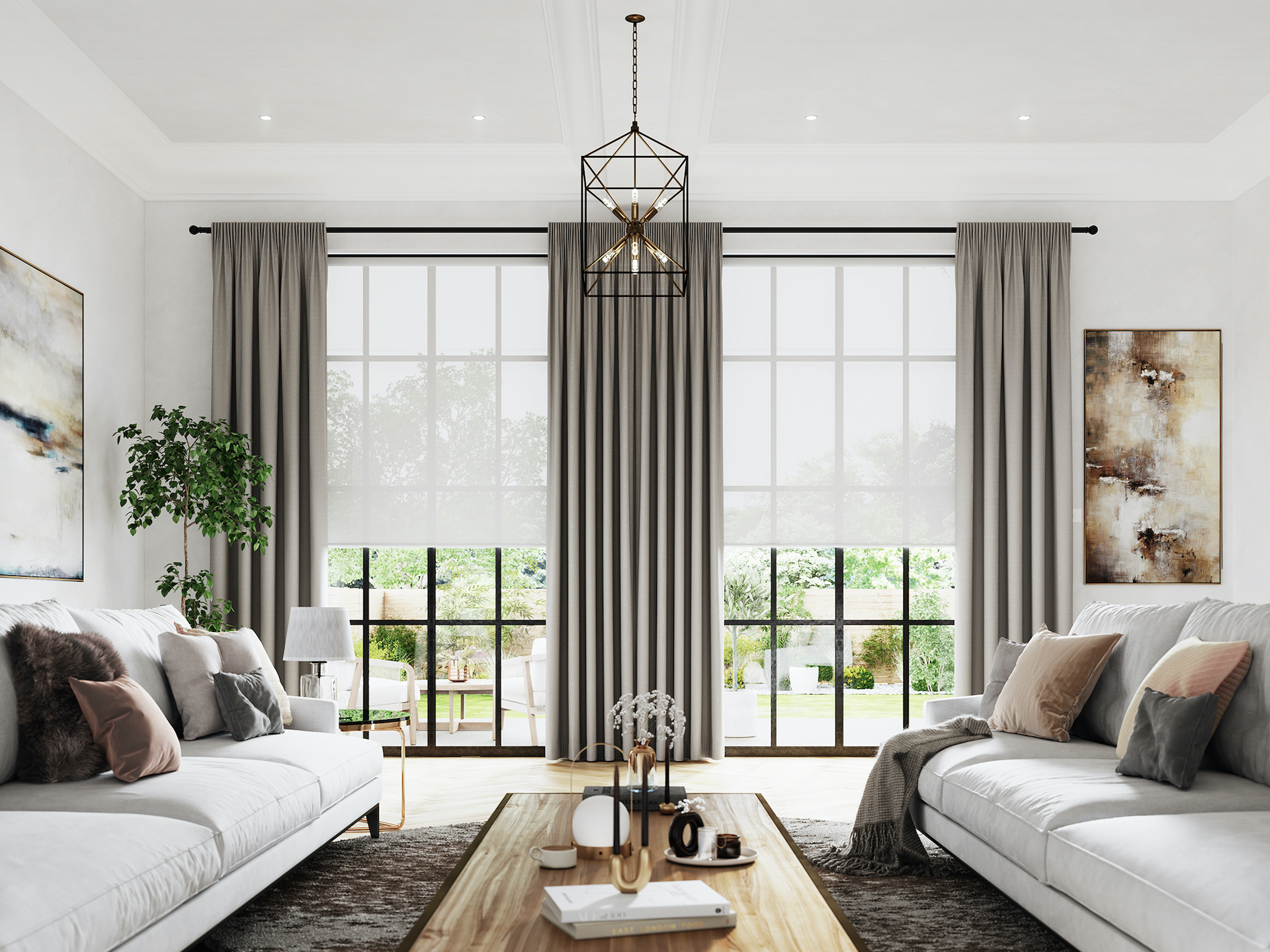
Image Credit: Swift Direct Blinds
Curtains or blinds? What works best where
When it comes to how to dress your windows, there are plenty of options to mull over. The first question is generally whether to choose curtains or blinds. But even once you’ve made that major decision for your window dressing, there are many more possibilities to wade through. Material, size, style? Roman, Venetian or roller? Velvet, pattered or plain? Floor length, short, pelmet? Thermal, blackout?
To help you decide between curtains or blinds, we’ve spoken to the experts. Here are their tips for what works best where, and what you should consider before splashing out on your new window dressing.
Large windows or French doors
For larger windows or French doors, floor-length curtains are an ideal choice, according to Jade Oliver, showroom stylist at Express Bi-Folding Doors. If you choose thicker materials, they will block out the light and act as a source of insulation, ideal for dealing with colder months and expensive heating bills.
If thick thermal material isn’t something you want or need, then velvet is a luxurious alternative for a large window or French door.
“Velvet can get a bad reputation for being too much or even tacky – but used correctly it can create a much more inviting and cosier space,” Jade says.
“It’s just important not to overuse it. If you are using velvet curtains, using velvet elsewhere in the room could risk it looking too bold. I would recommend keeping the velvet as an accent piece with your curtains, whilst using similar, complimenting colours and different materials across other furnishings in the room.”
Velvet curtains can introduce a new texture and add warmth to a room, advise Graham and Green owners Jamie and Lou Graham.
“We recommend choosing velvet to blend comfort and style, and add a touch of luxury to any space. Not only is this fabric durable, but it also acts as a great light insulator, blocking out interfering street light in the evening. These handmade Velvet Single Curtains (shown below) are beautifully lined with striped linen, and can be used to elevate cosy corners of your home.”
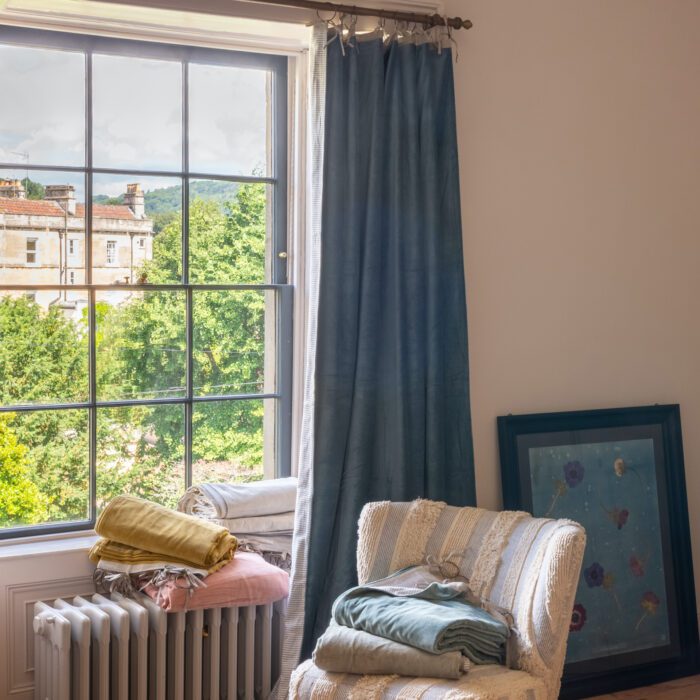
If you prefer blinds but need to cover large windows or doors, a good choice would be a vertical blind. Made up of vertical fabric slats, vertical blinds allow for adjustable lighting and privacy, similar to wooden blinds.
Kate Duckworth, trends & interior expert at Swift Direct Blinds, says, “This is a cost-effective option, with a variety of colours, patterns and performance fabrics, such as blackout fabrics.”
Modern windows
For those homes with a more contemporary or industrial look, voile curtains are a good choice.
“These are a perfect alternative if you don’t like thicker curtains and still want to keep an air of privacy. They let in plenty of light, yet completely block the view to the outside,” says Jade.
If you wanted a thicker material, it’s worth considering adding a pelmet. This is a board of fabric that juts out from the wall where you can pull your curtains out and around to minimise the amount of light that escapes.
If you’re keen on curtains, but want something a bit fresher in style, a French design trend could be perfect. One of the big trends interior designers have fallen in love with is French Cafe curtains, according to Tara Gilson, home design expert at Uber Interiors.
“These lowered down curtain rods are perfect for allowing in light yet still holding onto some privacy – making them perfect for bathrooms and living rooms that face out onto a street,” she says.
Roman blinds are one of the most on-trend window treatments of the last couple of years, according to Tara of Uber Interiors.
“Several designers are incorporating them into their briefs as an alternative to thick and somewhat extravagant heavy curtains,” she says.
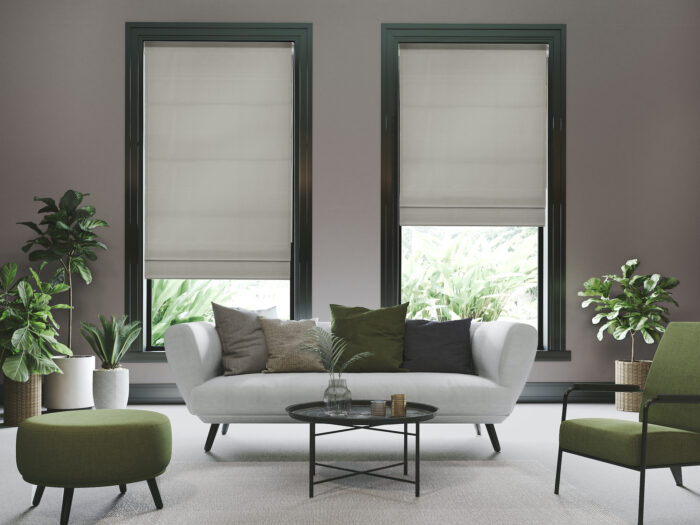
Front doors
Curtains will start appearing in other places besides just window frames this year, according to Jamie and Lou.
“Consider hanging curtains across door frames inside hallways to add a layer of depth and colour to your space. Alongside the added privacy, this technique acts as a great draught excluder, keeping the cold air out, and preserving the cosy ambience within, especially during the winter months.”
While front door curtains fell out of fashion, savvy home owners are embracing this trend for the modern era. Jade notes that searches for ‘thermal door curtain’ have risen by 450% in the last three months, as people look for alternative ways to keep their home warm this winter.
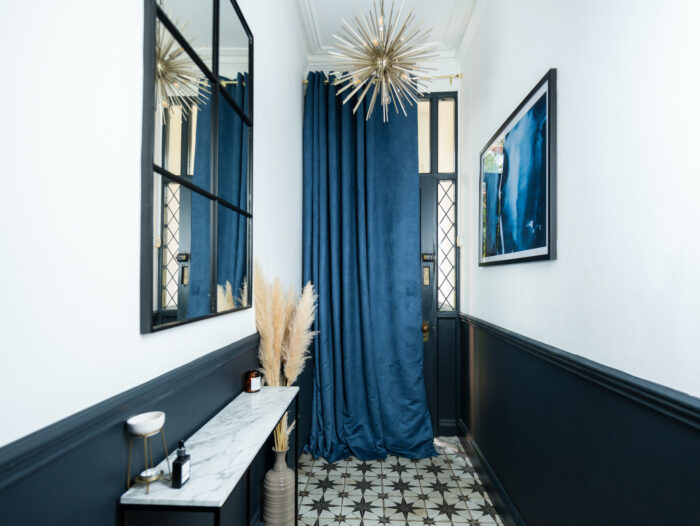
Value option
There are multiple factors to consider when choosing blinds: price, functionality, fitting and colour. If you’re on a tight budget, opt for a roller blind.
“If you’re looking for a cheap choice that will still add a clean, modern look to your space, a roller blind is your best bet,” advises Kate.
“These blinds come in a variety of colours and patterns, making them an ideal choice for any room. There are also moisture-resistant options for bathrooms and kitchens.”
Wooden blinds can be a versatile option, coming in a variety of finishes such as matt, gloss and fine grain. They’re ideal for rooms that may benefit from increased privacy and light control, such as the bedroom.
Kate adds, “These blinds are made up of wooden slats which can be altered to allow as much or as little light as you desire. This feature also helps to keep the room temperature down in the warmer months by reducing the amount of light entering the space.”
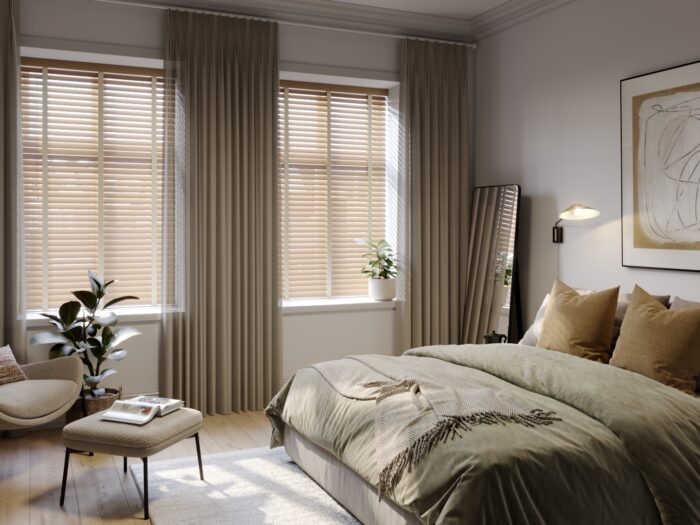
Home office
Blackout fabrics are a popular choice for bedroom blinds as a way to block out light when sleeping. But they are also a great option for a home office or living/working space.
“Room-darkening shades help create bedrooms conducive to peaceful sleeping as light filtering and blackout fabrics eliminate all or most external light sources,” says Mike Rivers, Owner and Operational Director at Fusion Office Design.
“Blackout blinds are also a good option for your home office as they give maximum privacy and light blocking. Blackout roller shades or Roman blinds in blackout fabrics are ideal if you take video calls or meetings and want a dark backdrop.”
Shutters
Shutters have grown in popularity over the last few years, and for good reason. They give a smart, streamlined look, and are very popular in Victorian houses. This writer lives on a street in East London, where almost all the houses along the row of Victorian terraces have dressed their front bay window with shutters.
Jade says, “There is another option if you want neither blinds or curtains, and it’s a perfect mix of the two – shutters. They have the flexibility of blinds yet block light the way curtains would.”
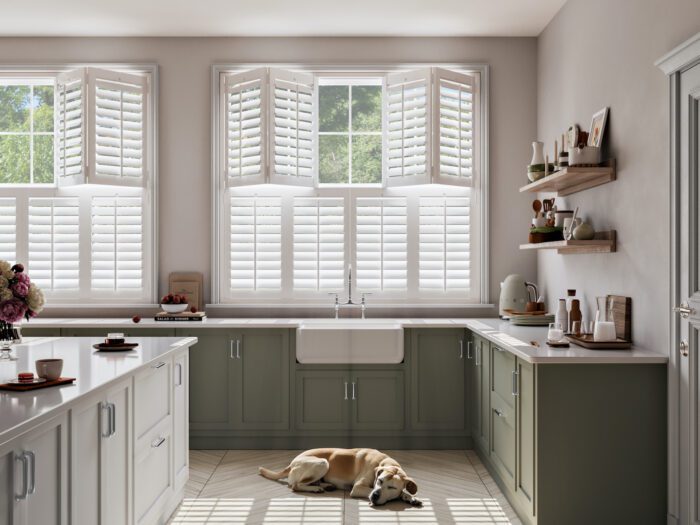
Smart windows
Once you’ve chosen from curtains or blinds, picked the perfect material, style and size, a final consideration is whether or how to make them smart.
Tara says, “Blinds and curtains can be opened and closed at the push of a button, and even when out and about via your phones. Something we will undoubtedly see more and more of in the coming years.”
Electric blinds aren’t often considered, as there’s a common misconception they’re extremely expensive to buy and fit. But they’re more affordable than people think, and the additional features are worth it, as Kate points out.
“These blinds can be paired with your smart devices, allowing you to control them from anywhere in the world. If you travel a lot for work or are away on holiday, you can rest easy knowing that you can open and close your blinds whilst away, providing the illusion that someone is home,” she explains.
“You can also set these blinds on a timer, this way they can open and close automatically at specific times of the day. This is a great feature for those who need the room dark to sleep but wake up best with natural lighting.”




